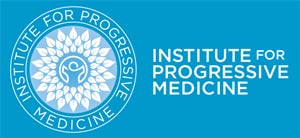1. Doctors spending more time with patients

Our regular office visits last 30 minutes, and new patients receive one hour. Sometimes it is during the last five minutes that patients come out with what is really troubling them. Certainly we arrange enough time to make patients comfortable, to find out about them and their families, and to create a relationship. It is this relationship that fosters healing, an opportunity for the doctor to assert an intention to improve the patients well-being.
Electronic medical records have further aggravated the situation, as physicians sit in front of their computers, typing away, scarcely looking at the person in front of them.
The issues we deal with are often sensitive, difficult for patients to express. They deserve, at least, the doctors full attention, with eyes on the patient and not on the clock.
2. Better research on nutritional therapies

Regarding vitamin C, it has been demonstrated that the anti-cancer effect requires a high dose, only achieved through intravenous administration. Also, the effect of folic acid in preventing fetal malformations increases as the dose is raised.
With conventional drug studies, it is established that 80 mg of Lipitor is far more effective than 20 mg in preventing cardiac events. This approach, of using higher doses and comparing them with lower doses, should be employed in nutrient research. There is the further benefit that nutrients are generally safe in high doses.
3. Teach medical students complementary medicine

Medical education continues to be guided by a drug and surgery paradigm, largely supported by contributions from pharmaceutical companies.
4. Establish safe and sane vaccination protocols for children
Childhood vaccinations are often promoted as completely safe, without side effects, and essential. Pediatricians have dismissed children from their practice when parents refused vaccination for their kids. The list of childhood vaccinations grows without end, and 35 vaccine administrations are now recommended.
In my opinion, a child does not need to be vaccinated against hepatitis B on the first day of life, or be given 5 different vaccines on the same day. A child should be given only one vaccination at a time, and only when he is well. The question of vaccines causing autism remains controversial. Despite research showing no connection between vaccination and autism, many parents trace the onset of autism to vaccination, the MMR vaccine being most suspect. If parents are concerned, they may withhold MMR vaccination until the child is 3 or 4 years old, after which the risk of autism is much reduced.
5. Sponsor education for health, and help people put programs in place
Whatever we are offering now, it is not enough. Causative factors of many chronic diseases are well-known, but correction remains to be implemented. It takes effort to create a healthy life-style, but when people are educated to know how to do so, they are much more likely to try.
Cigarette smoking has declined from 40% of adults to 20% in this country, as a result of education about the ravages of tobacco. We need the same progress in overweight and obesity, which now affect 2/3 of adults, and contribute to heart disease and cancer.
Health expenditures go toward treatment, very little toward prevention. We now have a $3 trillion dollar-a-year medical apparatus, with limited quality of life results.
Strong local, state and federal programs will eventually pay for themselves, as expensive diseases are eliminated.
6. Insurance companies including Medicare should pay for nutritional supplements as they do for drugs.
In our practice we are often able to replace drugs with supplements, providing equal benefits without side effects. Many medications are scarcely more effective than placebo, yet are very expensive. Adverse side effects of medications lead to prescribing of more medications, leading to even more complications. Insurance companies should be required to reimburse for medically prescribed supplements. Several programs already offer this benefit.
7. Awareness that medication may provide relief, but lifestyle provides cure.

Research has been available for over 40 years, from Pritikin, Ornish, and most recently Esselstyn, that a vegan diet, preferably combined with exercise and stress reduction, will prevent and reverse heart disease. We should move in the direction of spreading this information and implementing it. Otherwise we will continue to implement cardiac catheterizations, bypass surgery and stents, costing $100 billion a year.
8. Eliminate addicting drugs
A prime focus of our practice is helping people get off recreational and street drugs, and also prescribed sedatives and psychiatric and sedative medications. Drugs relieve pain, both physical and emotional, but we have come to depend excessively on drugs, with consequent addictions. The most rapid growth of addicting drugs now involves medically prescribed narcotics, affecting 4 million people. I.D. cards for medical marijuana are easily available, though state and federal departments seem unable to agree on whether they are legal. The DEA closes down marijuana shops, only to have them reopen in other locations.
The current paradigm is that if it is prescribed by a physician, it is okay to take. Narcotics are just as addicting whether prescribed or not, and so is marijuana.
9. Reduce psychiatric drugs

The current paradigm is that the fastest and easiest solution is the best. My experience has been that that is not usually correct. Emotional disturbances can be improved through dietary changes, specific nutritional supplementation, improved sleep, detoxification, changing behavior and relationships, and certain cognitive approaches. Drugs do not solve life problems. They cover them.
Allan Sosin MD
